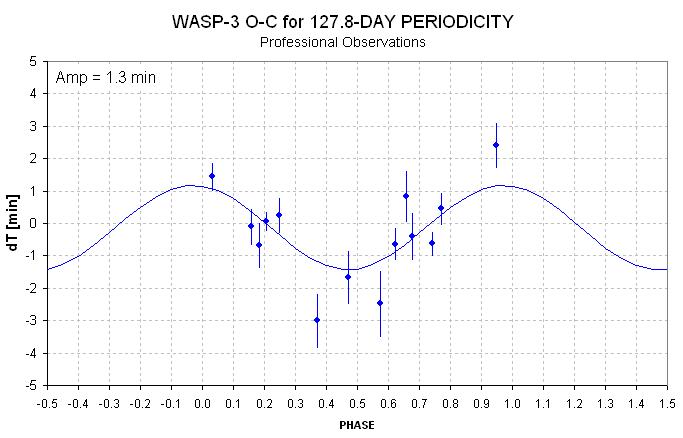
Figure 1a. Folded O-C for "professional" data using 127.8-day period (best chi-square). One measurement (Tripathi et al, 2454627.72098) has been deleted since it was a partial transit.
Links internal to this web page:
Comments
Basic data
Table & Plots
Amateur Lransit LCs
Professional Light Curves
OOT LCs
Finder image
References
Comments on LCs on this web page:
Three LCs show brightenings either after egress, before ingress
or both. This is not seen in the other LCs, so if there's forward scattering
causing these occasional brightenings it couldn't be due to a
simple ring system. Let's keep track of the egress and ingress
shapes to see if more brightenings are present.
It has been suggested by Maciejewski et al, 2010 (http://arxiv.org/abs/1006.1348)
that TTV exhibits a sinusoidal variation with a period of ~ 127.4 days,
which can be produced by a second exoplanet in a close to 2:1 outer orbit
resonance. Their best fit model has an amplitude (half of peak-to-peak) of
~ 2.0 minutes. The Maciejewski et al
analysis uses the Baryccentric Julian Date reference frame
(BJD) and Terrestrial Dynamic Time (TT) time standard, which is a practice
all exoplanet observers should adhere to (see http://arxiv.org/abs/1005.4415
for more information about this). I have processed the data
used in the Maciejewski
et al analysis and arrive
at a similar solution, given below (Fig. 1a). I have also converted all
AXA amateur mid-transit times to the Barycentric Dynamical Time (TDB) time
standard (the same as TT time to within ~ 50 ms) using the web site converter
for JD_UTC to BJD_TDB (http://astroutils.astronomy.ohio-state.edu/time/utc2bjd.html).
Adopting a 127.4-day periodicity does not show a similar TTV variation.
It is probably premature to conclude that a second exoplanet near the 2:1
outer orbit is perturbing WASP-3b producing a ~ 127-day TTV. More observations
are needed to resolve this intriguing possibility.
Note: On 2010.07.14 I sent an e-mail to many exoplanet observers calling
for observations of WASP-3 to clarify the matter of a TTV caused by a second
planet. I made a grievous mistake in thinking the TTV had a periodicity
similar to the putative 2:1 outer orbit second planet, when in fact the
suggestion by Maciejewski et al was for a 127.4 +/- 4.4 day periodicity
caused by the 2:1 second planet. The following figures incorporate this
correction (though one professional datum in my plots differ from that plotted
in the Maciejewski et al paper).

Figure 1a. Folded O-C for "professional" data using 127.8-day
period (best chi-square). One measurement (Tripathi et al, 2454627.72098)
has been deleted since it was a partial transit.
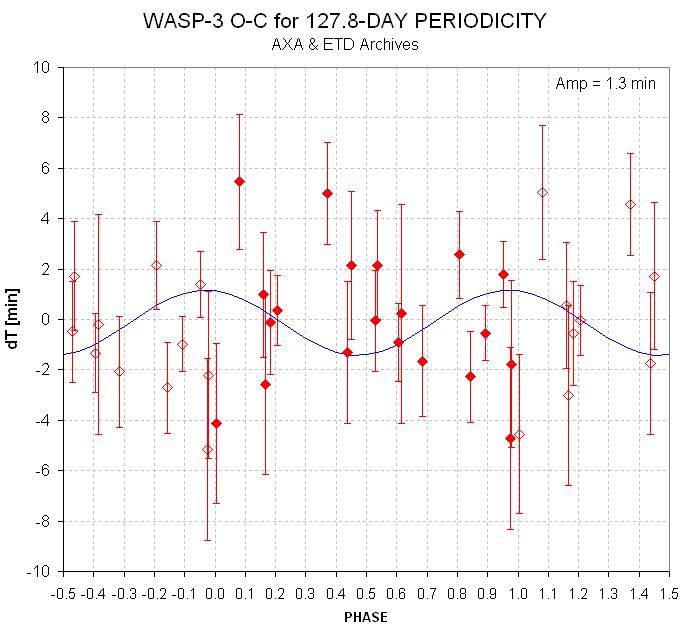
Figure 1b. Folded O-C for AXA amateur data using 127.4-day
period. No support for the 127.8-day periodicity that appears to be
present in the professional data set.
Both plots use BJD (Baryccentric Julian Date) reference frame and TDB
(Barycentric Dynamical Time) time standard.
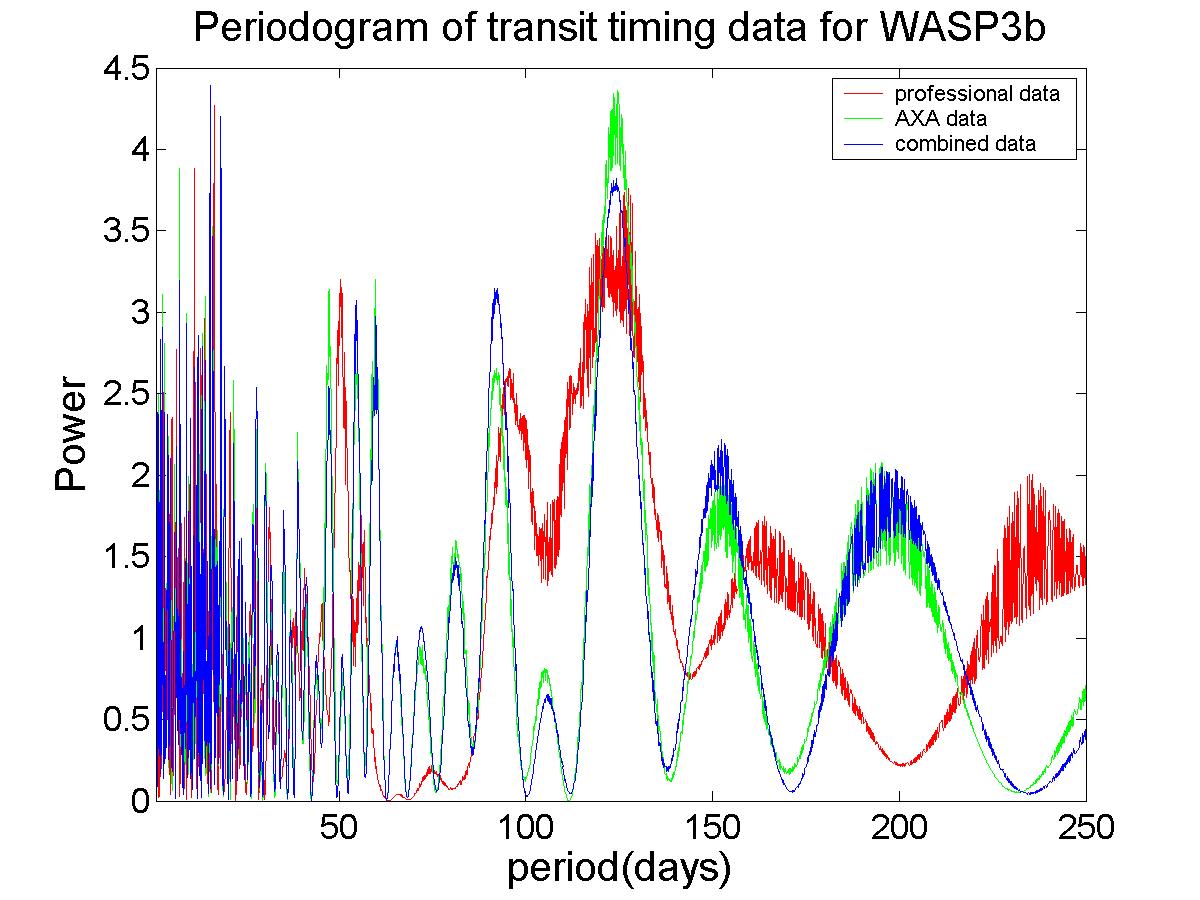
Periodogram by Sigfried Vanaverbeke (2010.07.16). Note peaks at ~ 120
days and 91 days.
Basic Data -
Updates After Each New LC Terminated
2009.07.20 (occasional updates will be made when I have time)
RA = 18:34:31.6, Decl = +35:39:41
Season = July 2
V = 10.64,
HJDo =
4605.55915 (23) & P = 1.846834 (2) day (as listed on Schneider's
Extrasolar Planets Encyclopaedia,
from Gibson et al, 2008)
BJD_TDBo = 4605.55995
(16) & P = 1.8468358 (6) day (fit using AXA data); or even better:
BJD_TDBo = 4697.90174
(16) & P = 1.8468358 (6) day
Depth = 12.8
± 0.7 mmag (VRI-bands)
Length = 2.70
± 0.05 hr
Fp = 0.25 ± 0.03,
F2 = 0.89 ± 0.08
Table and Plots
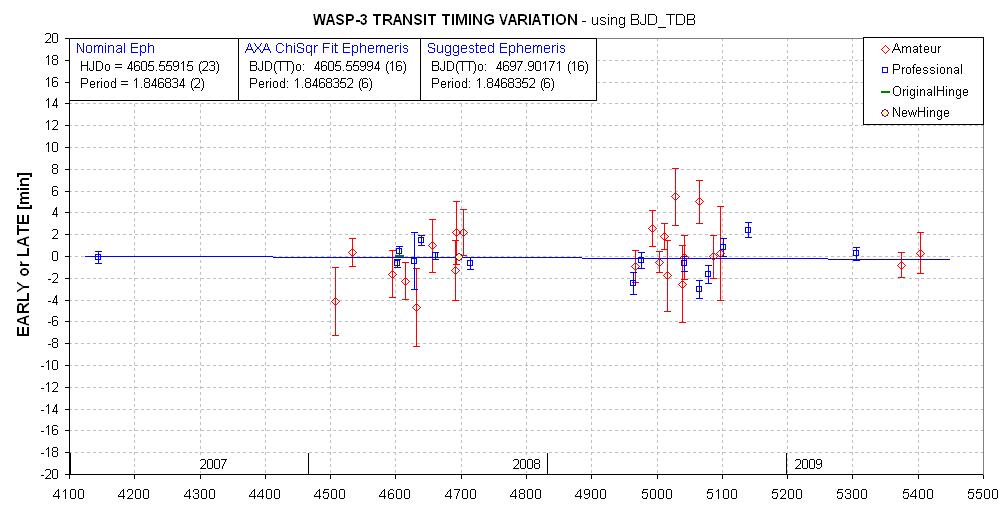
TTV using BJD (Baryccentric Julian Date) reference frame and
TDB (Barycentric Dynamical Time) time standard.
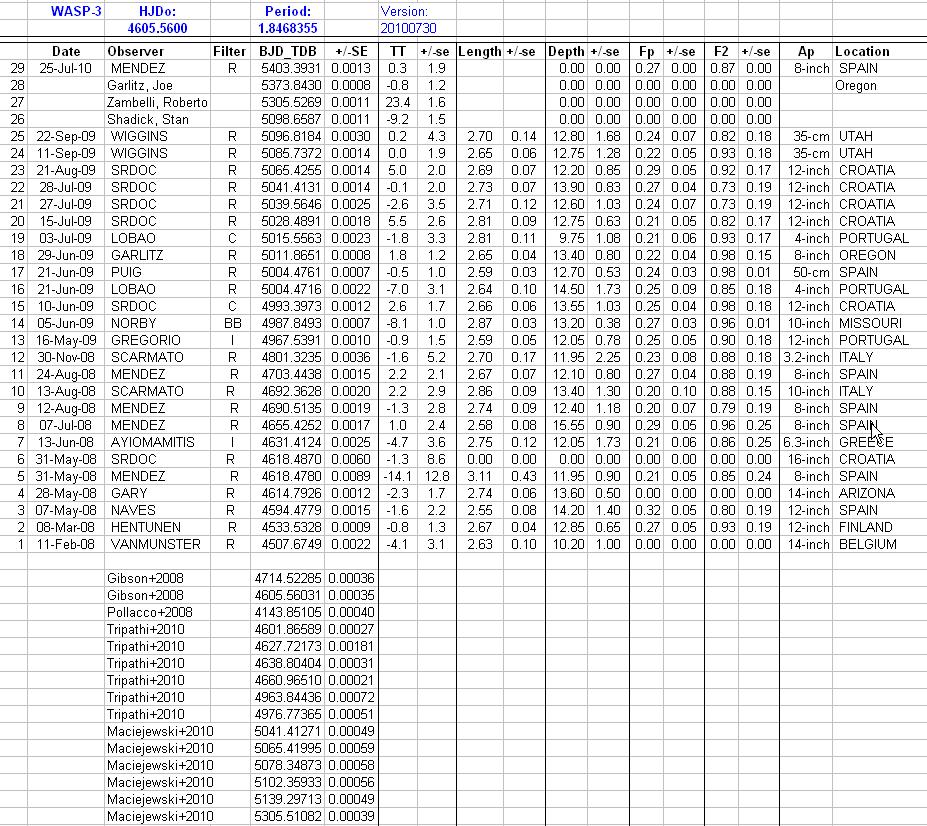
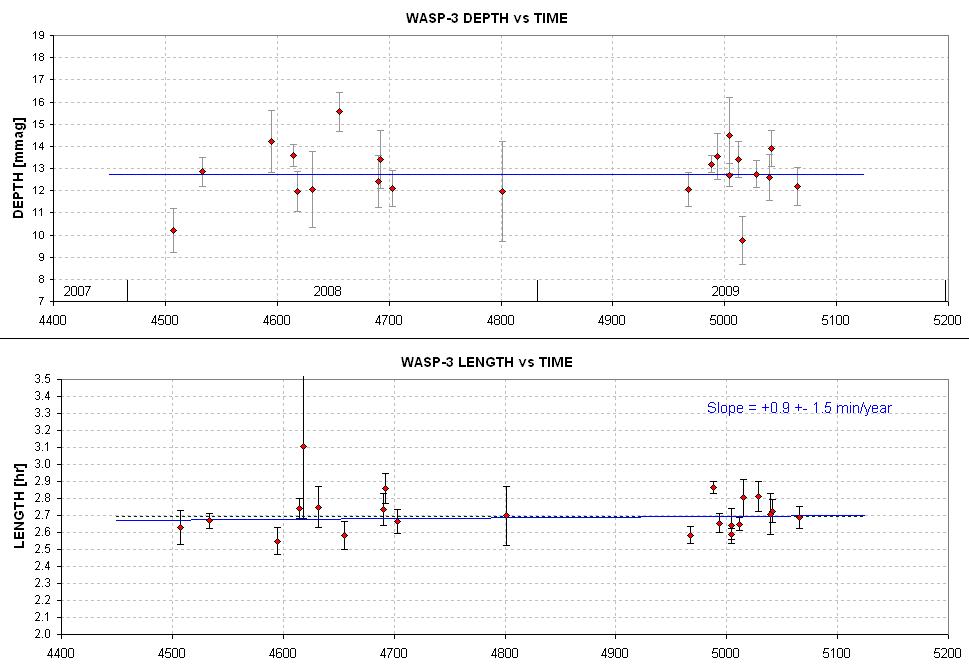
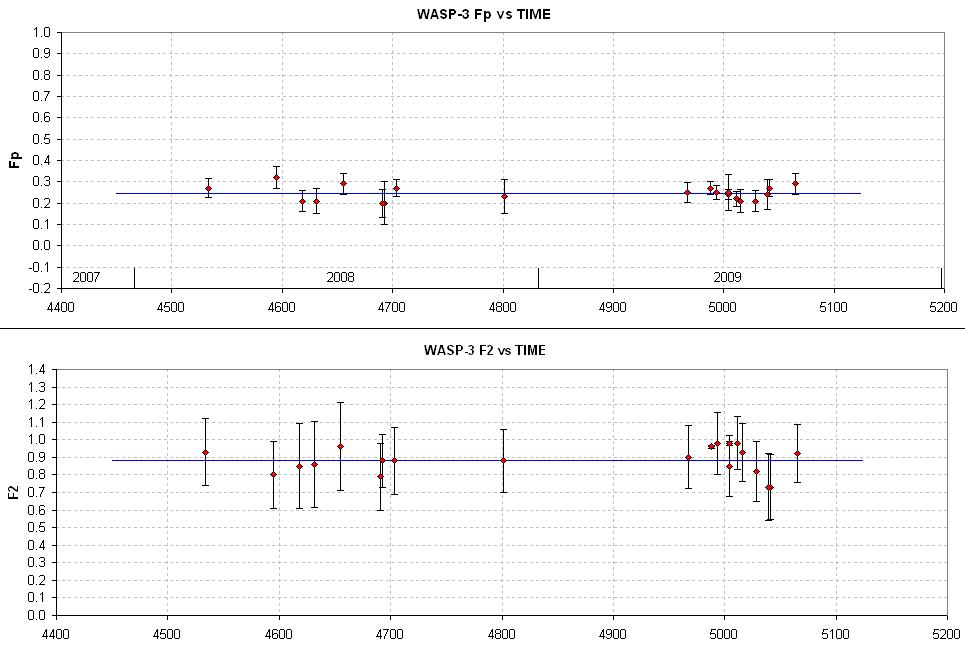
Light curves not yet included in table &
plots (above)
Light curves - Updated 2009.08.25
Transit Light Curves
- These
Light Curves Have Been Included in Plots & Table in Above Section
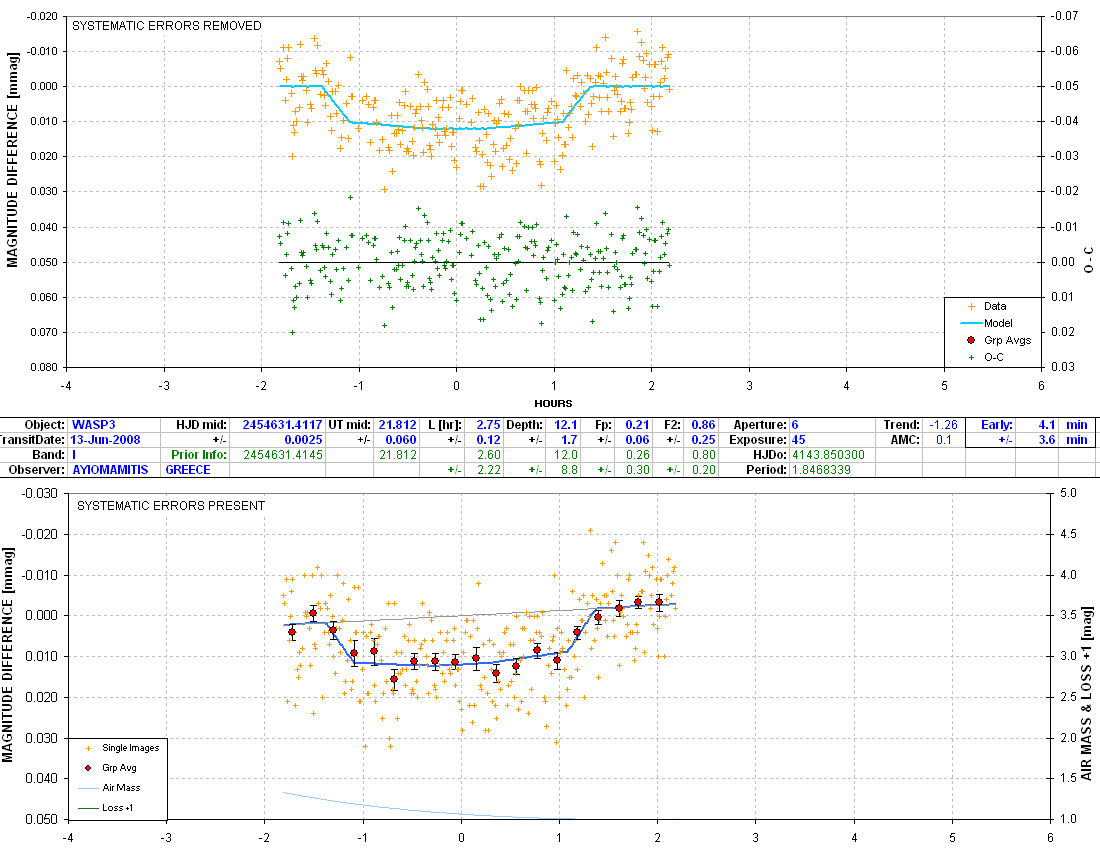
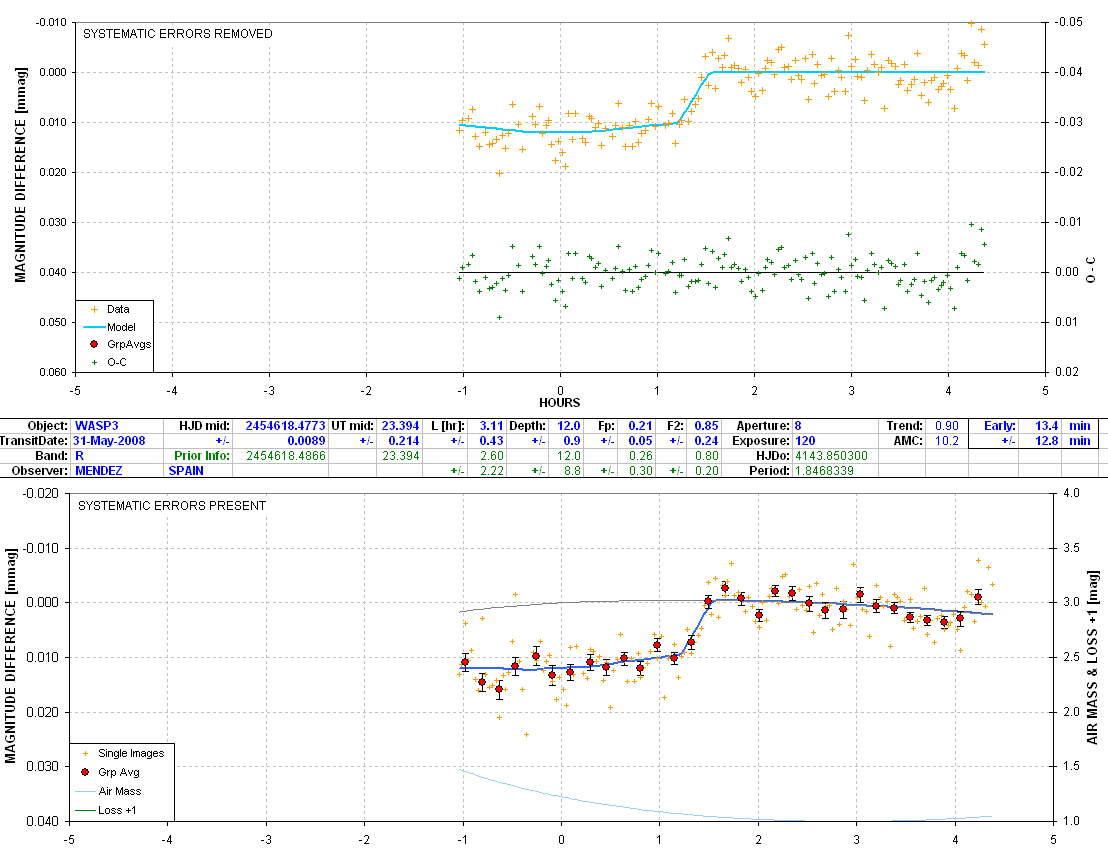
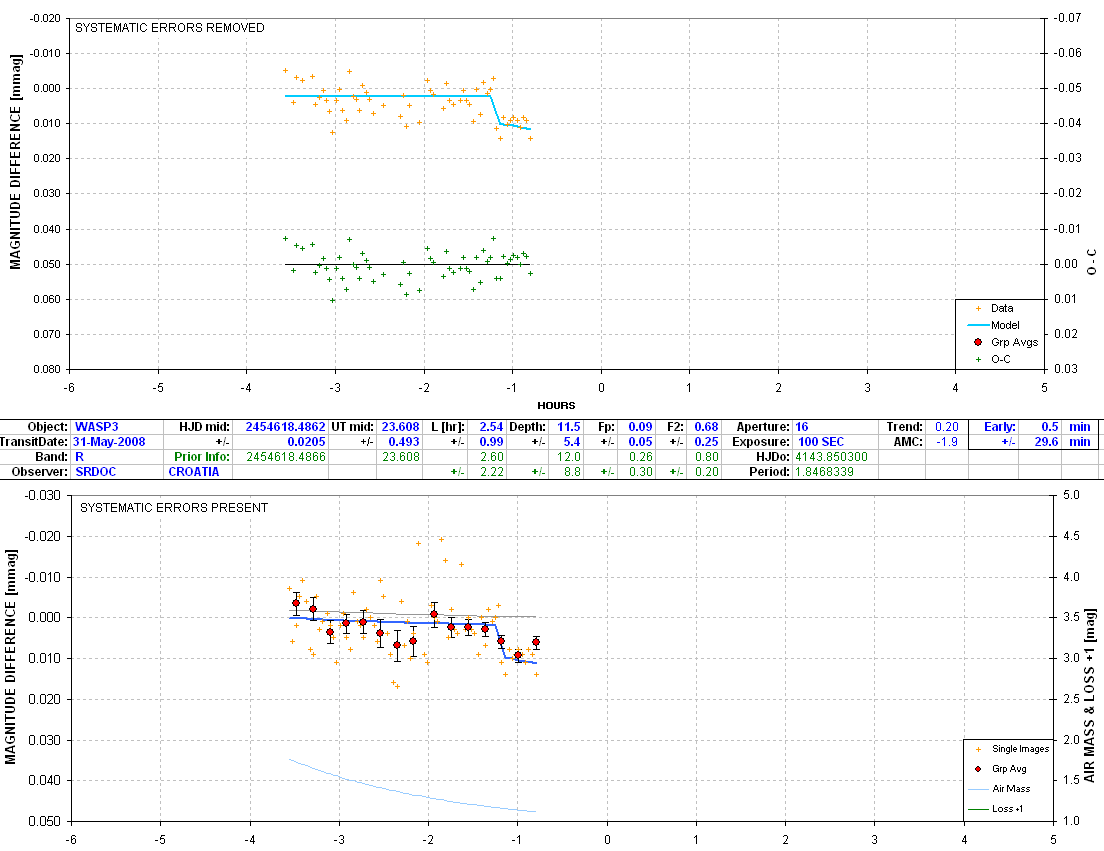
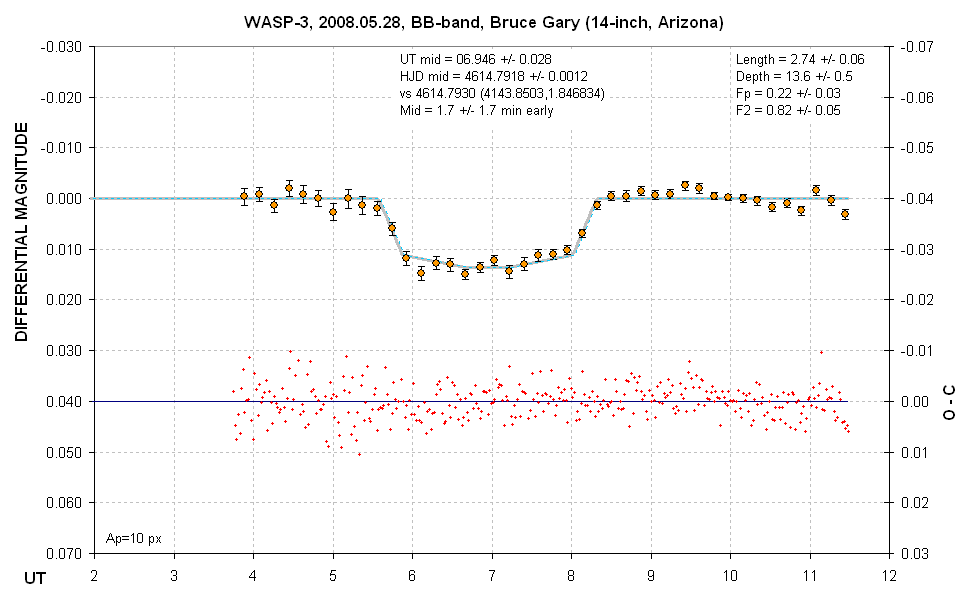
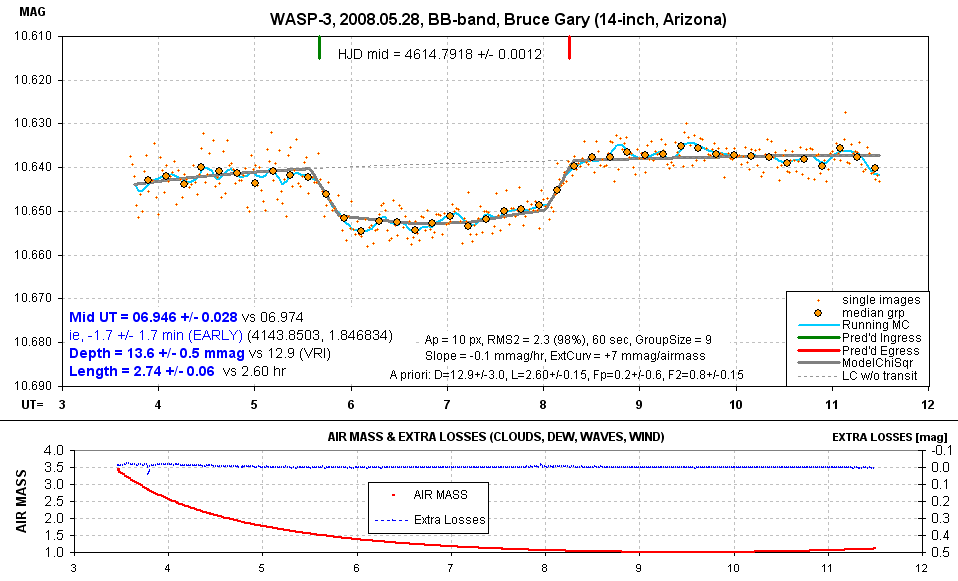
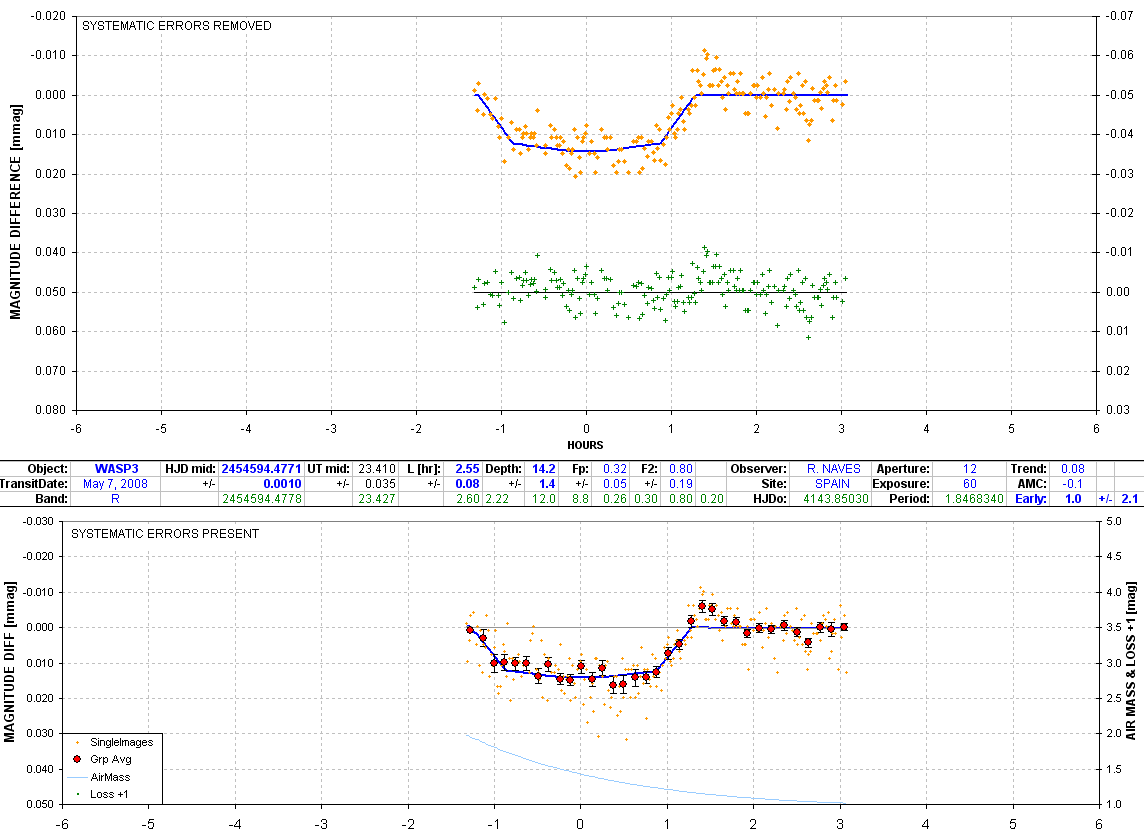
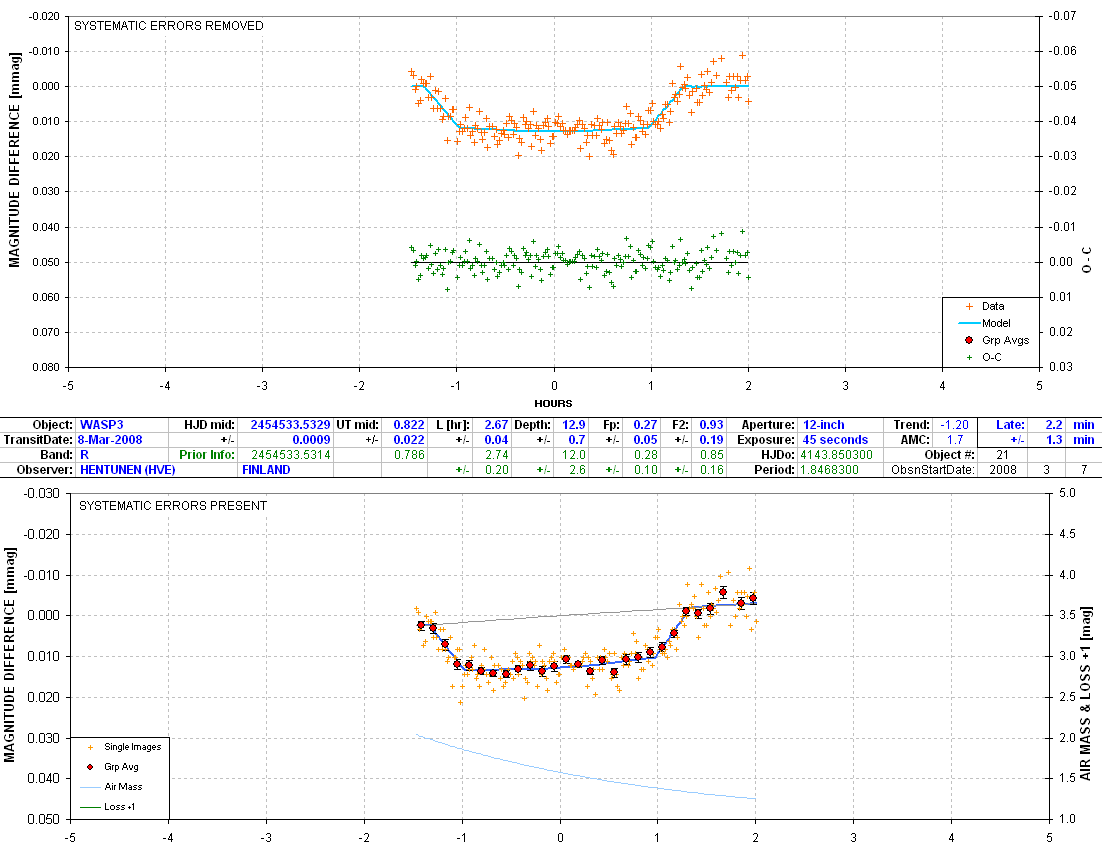
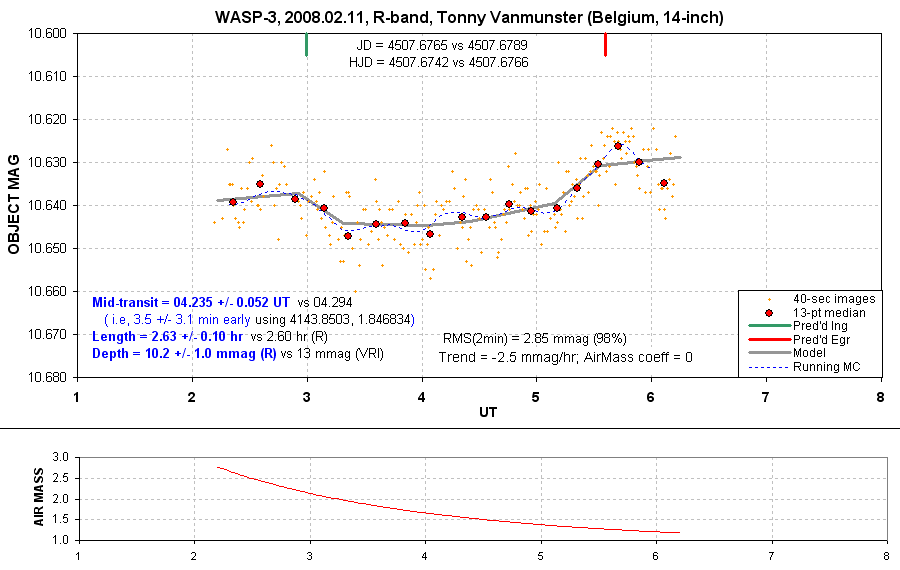
Out-of-Transit (OOT) Light Curves
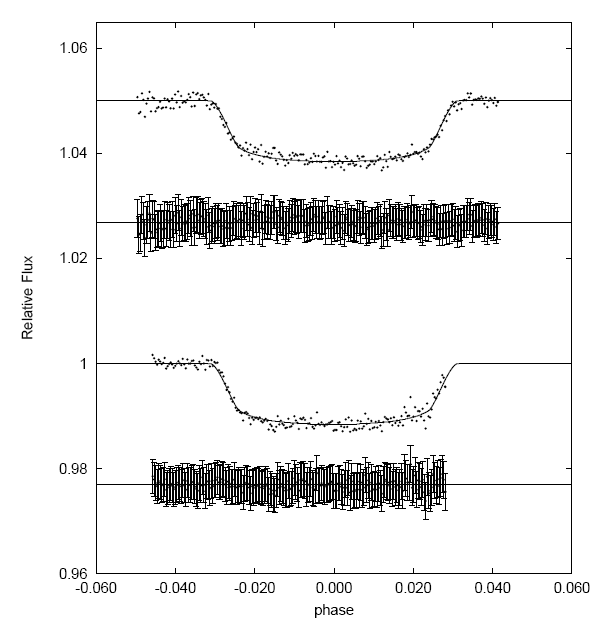
From Gibson, N. P., et al, 2008, using 2-m
Liverpool Telescope (La Palma) with bandpass 0.5 - 0.7 micron, on
dates 2008.05.18 (top) and 2008.09.04 (bottom). (Try to overlook
the excessively conservative error bars, e.g., SE Sermon.)
Maciejewski et al, 2010: http://arxiv.org/abs/1006.1348
Tribathi et al, 2010: http://iopscience.iop.org/0004-637X/715/1/421
Gibson, N. P., et al, 2008, "Updated parameters for the transiting exoplanet
EASP-3b using RISE,..." arXiv link
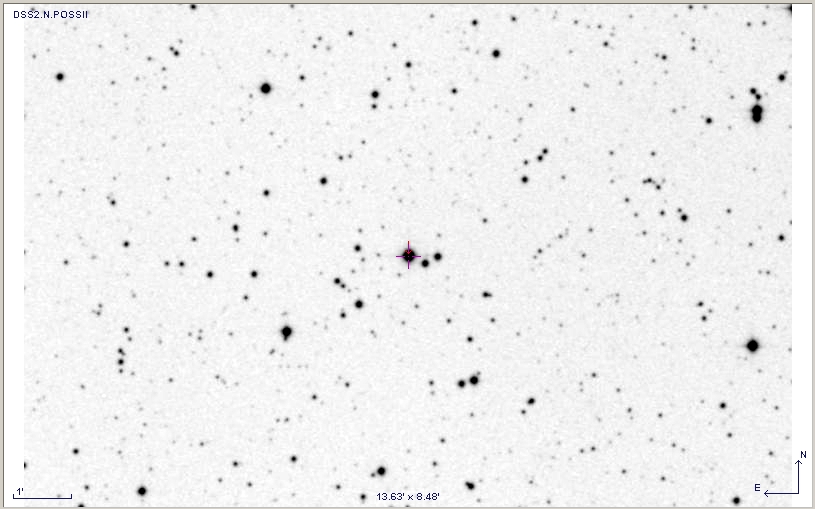
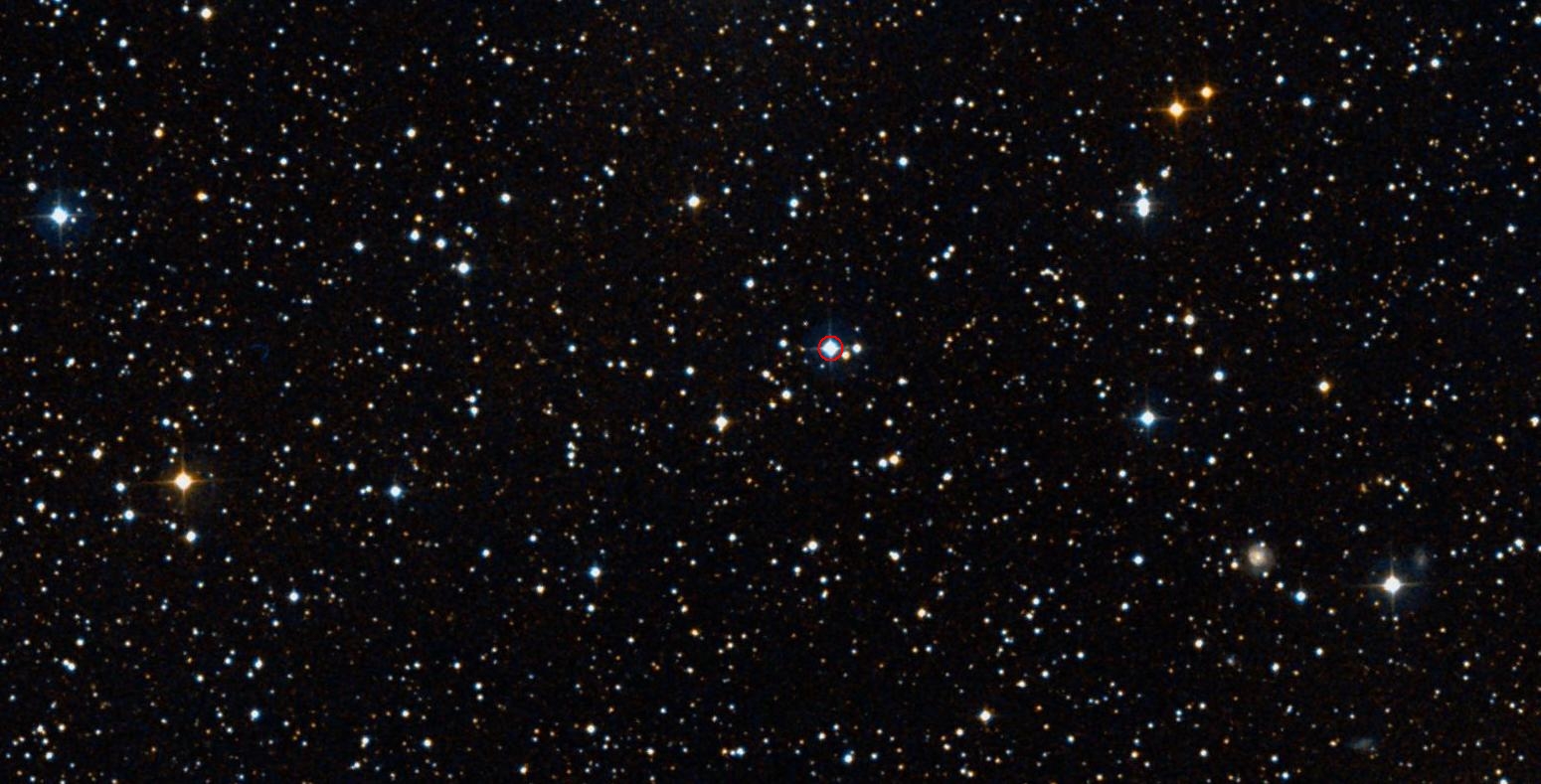
WebMaster: Bruce
L. Gary. Nothing on this web page is copyrighted. This site opened: November 06, 2007. Last Update: 2010.07.30